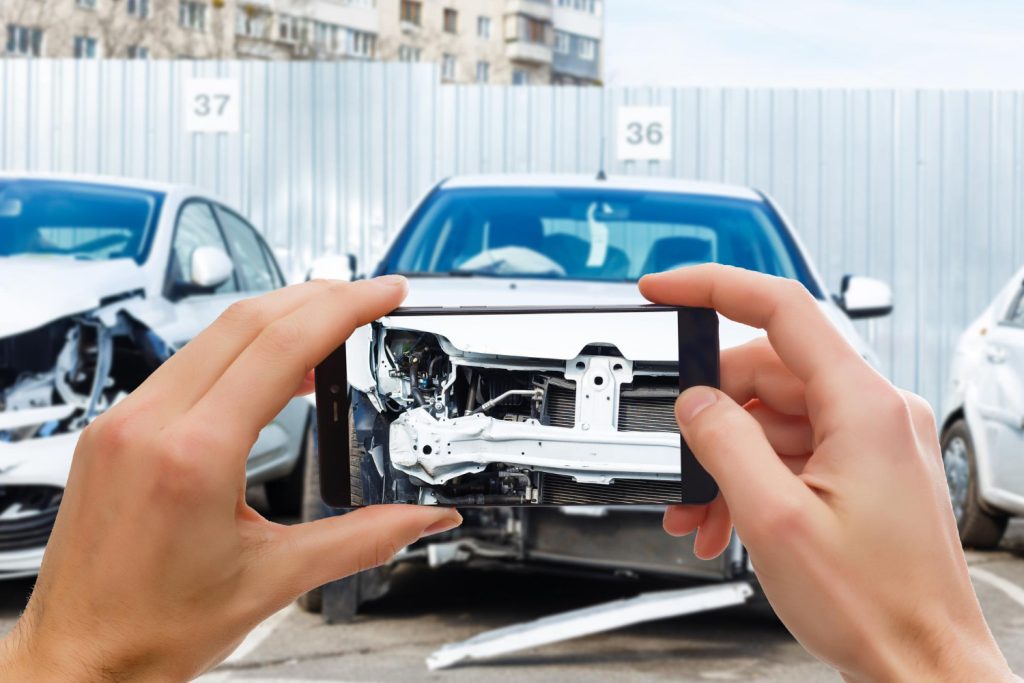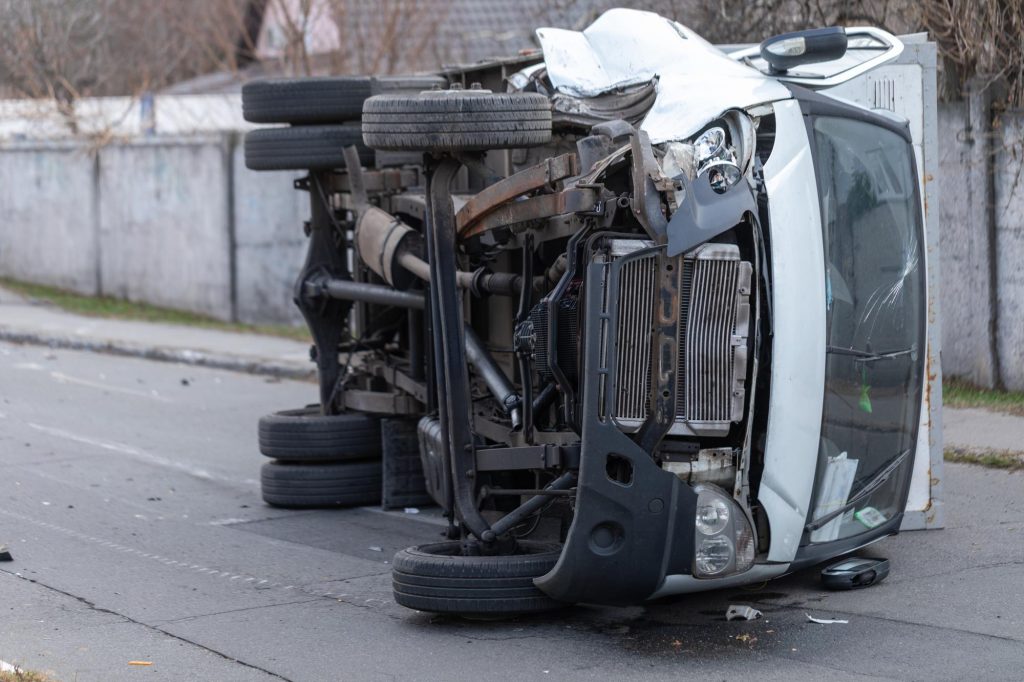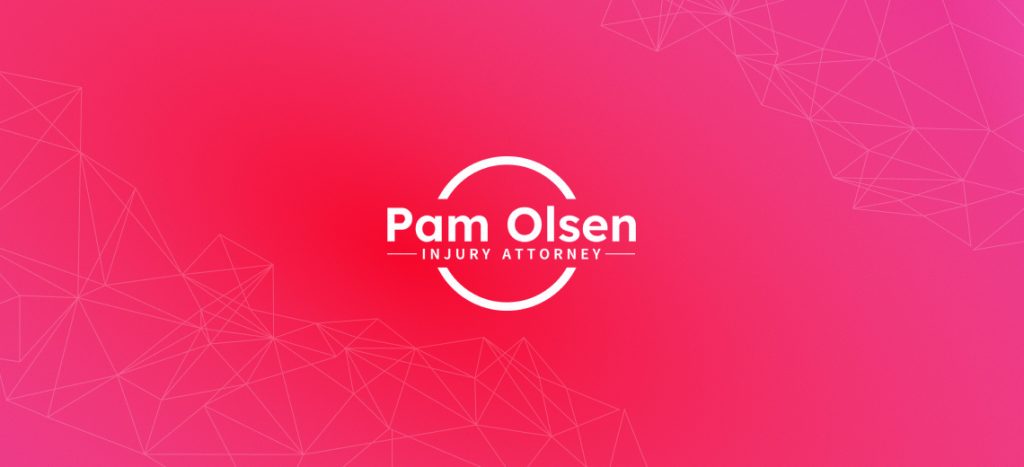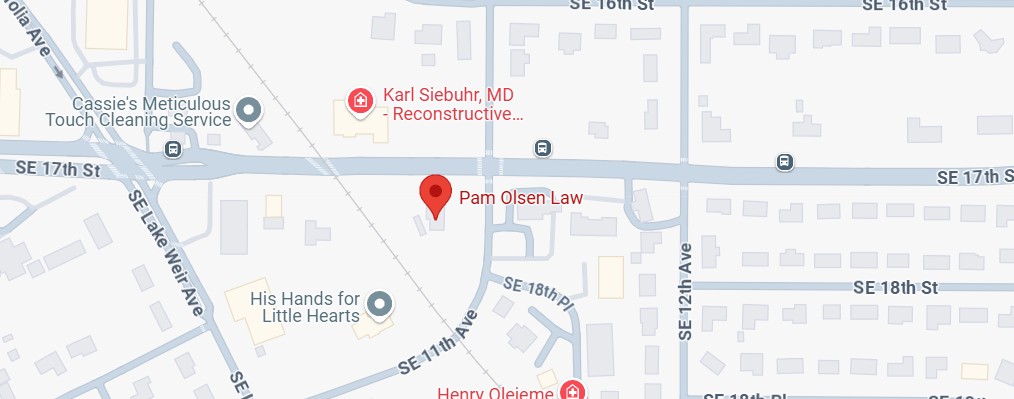Key Takeaways:
- Sideswipe Accidents Are More Dangerous Than They Appear: While often perceived as minor fender-benders, sideswipe collisions can cause severe injuries including traumatic brain injuries, whiplash, and broken bones. They frequently trigger secondary crashes that can be even more dangerous than the initial impact.
- Unsafe Lane Changes Are the Leading Cause: The primary cause of sideswipe accidents is improper lane changes, particularly when drivers fail to check blind spots, don’t signal properly, or make abrupt lane changes without adequate spacing.
- Distracted Driving Significantly Increases Risk: Texting, cell phone use, adjusting GPS systems, and other distractions contribute to thousands of accidents annually. At 55 mph, looking away for just 5 seconds equals driving a football field blindfolded.
- Ocala’s Traffic Patterns Create Specific Risks: High-risk areas include I-75 corridor (heavy traffic and tourist drivers), Silver Springs Boulevard (complex intersections), and construction zones. Marion County recorded 3,430 accidents resulting in 5,579 injuries in 2023.
- Rush Hour Timing Matters: Sideswipe crashes peak during rush hours, especially between 3 PM and 6 PM on Thursdays when traffic is heaviest and drivers are most distracted.
- Weather Conditions Amplify Dangers: Florida’s heavy rain, fog, and sun glare create poor visibility conditions that increase the likelihood of sideswipe accidents, especially during early morning hours and peak commuting times.
- Long-Term Consequences Are Significant: Only 12% of soft tissue injury victims recover completely, while 44% must permanently modify their work activities. Many victims face chronic pain, PTSD, lost wages, and ongoing medical expenses.
- Legal Rights and Time Limits Are Critical: Florida operates under “pure comparative negligence” laws, and injured drivers must seek medical treatment within 14 days to maintain insurance benefits. Proper documentation and legal consultation are essential for fair compensation.
- Prevention Requires Defensive Driving: Key prevention strategies include checking blind spots before lane changes, using turn signals early, maintaining safe following distances, avoiding cell phone use, and staying extra alert in construction zones.
- Immediate Post-Accident Actions Are Crucial: After an accident, prioritize safety by moving out of traffic, call 911 if anyone is hurt, document everything with photos, gather witness information, seek medical attention promptly, and avoid admitting fault at the scene.
When you’re driving on I-75 through Ocala or navigating busy intersections like Silver Springs Boulevard, you might not think about how quickly a routine lane change can turn dangerous. Sideswipe car accidents occur more often than you might expect, and understanding why they occur can help protect you and your family on Florida’s highways. These car wrecks can result in severe injuries, especially when determining fault in a sideswipe becomes complicated. If you find yourself involved in such an incident, consulting with a personal injury attorney in Ocala can be crucial for protecting your rights and securing proper compensation.
What Is a Sideswipe Accident?
A sideswipe accident occurs when two vehicles traveling in the same direction or opposite direction collide along their sides. Unlike head-on collisions, these crashes typically happen when vehicles are moving parallel to each other. On multi-lane highways like I-75, most sideswipe accidents involve cars changing lanes or merging.
These incidents can range from minor scrapes to severe crashes that cause vehicles to lose control, spin out, or collide with other vehicles. What makes sideswipe collisions particularly dangerous is that they often lead to secondary impacts, where the initial contact causes drivers to swerve into other lanes or off the roadway entirely.
Common Causes of Sideswipe Accidents on Ocala Highways
Understanding how sideswipe accidents happen starts with recognizing the most common causes. Unsafe lane changes are a leading cause of thousands of car accidents annually in Florida, with sideswipe collisions alone accounting for a significant share of crashes both statewide and locally in Marion County.
Unsafe Lane Changes and Improper Merging
The leading cause of sideswipe car accidents is improper lane changes. This happens when:
- Drivers fail to check their blind spots before changing lanes
- Multiple vehicles attempt to move into the same lane simultaneously
- Drivers make abrupt lane changes without proper signaling
- Merging drivers misjudge vehicle distances when entering highways
On busy Ocala highways like I-75, especially near exits for College Road and Blitchton Road, merging traffic creates high-risk situations where sideswipe accidents occur frequently.
Distracted Driving
According to NHTSA Safety Reports, distracted driving contributes to thousands of accidents annually. When drivers take their eyes off the road for just five seconds at 55 mph, it’s equivalent to driving the length of a football field blindfolded.
Common distractions that lead to sideswipe collisions include:
- Texting or cell phone use (13% of distracted driving fatalities)
- Adjusting music or GPS systems
- Eating or drinking while driving
- Conversing with passengers
Aggressive Driving and Speeding
Road rage and aggressive driving have surged in recent years, with fatal crashes linked to these behaviors more than doubling nationwide between 2010 and 2021, according to NHTSA Annual Reports. Aggressive behaviors that cause sideswipe accidents include:
- Weaving between lanes at high speeds
- Cutting off other vehicles
- Refusing to let others merge
- Following too closely in heavy traffic
Failure to Signal
Florida law requires drivers to signal before every lane change or turn. Yet many drivers overlook this crucial safety step, creating dangerous situations where other motorists can’t anticipate lane changes.
Additional Risk Factors
Beyond the primary causes, several other factors contribute to sideswipe accidents:
- Speed-related incidents: In some areas like Orange County, unsafe speeds contribute to over 10% of sideswipe crashes, showing how speed can escalate the risk of these collisions, according to FLHSMV Crash Dashboard data
- Construction zones: Temporary lane restrictions and changing traffic patterns increase confusion
- Tourist and unfamiliar drivers: Ocala’s location on I-75 brings many out-of-state drivers unfamiliar with local roads
Florida’s weather conditions can create hazardous driving situations. Poor visibility due to:
- Heavy rain and storms
- Fog, especially during early morning hours
- Sun glare during peak commuting times
Weather and Visibility Issues
Florida’s weather conditions can create hazardous driving situations. Poor visibility due to:
Why Ocala Highways Are Prone to Sideswipe Accidents
Ocala’s unique traffic patterns create specific risks for sideswipe collisions. The city sits along major transportation corridors, with I-75 serving as a primary route for both local commuters and long-distance travelers.
High-Risk Locations
Based on traffic analysis, certain areas in Ocala see higher rates of sideswipe accidents:
| Location | Risk Factors |
| I-75 Corridor | Heavy traffic, frequent lane changes, tourist drivers |
| Silver Springs Boulevard | Complex intersections, merging traffic |
| College Road | School zones, varying traffic patterns |
| Blitchton Road | Construction zones, lane restrictions |
Traffic Volume and Congestion
Marion County has experienced significant growth, leading to increased traffic congestion. In 2023, Ocala recorded 3,430 accidents that resulted in 5,579 injuries, reflecting the heavy traffic and accident risk on our local roads, according to FLHSMV Marion County data. During rush hours, the combination of heavy traffic and impatient drivers creates conditions where sideswipe accidents occur more frequently.
Data shows that sideswipe crashes peak during rush hours, especially between 3 PM and 6 PM on Thursdays, when traffic is heaviest and drivers are most distracted, based on Orange County data. In neighboring Orange County, sideswipe crashes are the second most common type of collision, making up nearly 11% of all accidents.
Consequences and Injuries from Sideswipe Accidents
While some people assume sideswipe collisions cause only minor damage, the reality is quite different. These accidents can result in serious injuries and significant consequences for everyone involved.
Common Injuries
Research shows that whiplash is the most common injury in sideswipe accidents, affecting a large majority of victims and often leading to long-term pain and mobility issues..However, victims often face much more severe trauma:
Immediate Injuries:
- Whiplash and neck injuries
- Traumatic brain injuries (TBI)
- Broken bones and fractures
- Soft tissue damage
- Head injuries
Long-term Consequences:
- Chronic pain and mobility issues
- Emotional trauma and PTSD
- Lost wages and reduced earning capacity
- Ongoing medical expenses
Recovery statistics reveal that only 12% of soft tissue injury victims recover completely, while 44% must permanently modify their work activities.
Secondary Crashes and Fatal Consequences
Sideswipe accidents often trigger secondary impacts that can be even more dangerous than the initial collision. When drivers lose control after a sideswipe crash, they may:
- Collide with other vehicles
- Strike roadway barriers or trees
- Roll over, especially in SUVs and trucks
- Cause multi-vehicle accidents
Florida experiences nearly 400,000 crashes annually, with over 3,400 fatalities reported in 2023, underscoring the ongoing risks on our roadways. Marion County saw 155 pedestrian accidents with 13 fatalities in 2023, highlighting the dangers not only for drivers but also for those on foot.
Legal and Insurance Considerations in Ocala, FL
When sideswipe accidents happen, determining fault becomes crucial for victims seeking compensation. Florida operates under a “pure comparative negligence” system, meaning injured parties can still recover damages even if they were partially at fault.
Proving Negligence
To succeed in a personal injury lawsuit, you must prove the other driver’s negligence caused your injuries. This requires evidence such as:
- Police reports and witness statements
- Dashcam footage or traffic camera recordings
- Vehicle damage patterns
- Cell phone records showing distracted driving
- Expert accident reconstruction
Types of Compensation Available
Victims of sideswipe car accidents may be entitled to compensation for:
Economic Damages:
- Medical bills and future medical expenses
- Lost wages and reduced earning capacity
- Property damage to vehicles
- Rehabilitation and therapy costs
Non-Economic Damages:
- Pain and suffering
- Emotional distress
- Loss of enjoyment of life
- Permanent disfigurement or disability
Remember, Florida law requires injured drivers to seek medical treatment within 14 days after a crash to ensure their insurance benefits remain intact, even if injuries don’t show right away. Prevention Tips for Drivers on Ocala Highways
While you can’t control other drivers’ actions, you can take steps to reduce your risk of being involved in a sideswipe collision:
Safe Lane Changing Practices
- Always check mirrors and blind spots before changing lanes
- Use turn signals well in advance
- Maintain safe following distances
- Avoid changing multiple lanes at once
- Be extra cautious in construction zones
Staying Alert and Focused
- Keep your eyes on the road and hands on the wheel
- Avoid cell phone use while driving
- Don’t eat, drink, or engage in other distracting activities
- Stay aware of vehicles in adjacent lanes
- Adjust your driving for weather conditions
Vehicle Maintenance
- Ensure proper tire pressure and tread depth
- Check that all lights and signals work properly
- Maintain clear visibility through clean windows
- Address mechanical issues promptly
What to Do After a Sideswipe Accident in Ocala
If you’re involved in a sideswipe accident, your immediate actions can significantly impact your safety and any potential legal claim.
Immediate Safety Measures
- Stay calm and assess the situation
- Move to safety if possible – Get out of traffic lanes
- Check for injuries – Call 911 if anyone is hurt
- Call law enforcement – Florida Highway Patrol or local police
Protecting Your Legal Rights
Even if you feel fine immediately after the accident, remember that adrenaline can mask injuries. Here’s what you should do:
- Seek medical attention promptly – Some injuries don’t appear for hours or days
- Document everything – Take photos of vehicle damage, road conditions, and the accident scene
- Gather witness information – Get contact details from anyone who saw the accident
- Don’t admit fault – Avoid making statements about who caused the accident
- Contact your insurance company – Report the accident, but be careful about recorded statements
When to Consult an Attorney
If you’ve suffered injuries in a sideswipe accident, consulting with an experienced personal injury attorney can help protect your rights. Insurance companies often try to minimize payouts, especially in cases where fault isn’t immediately clear.
An attorney can help you:
- Investigate the accident thoroughly
- Gather evidence to prove the other driver’s negligence
- Handle communications with insurance companies
- Negotiate for fair settlement amounts
- Take your case to trial if necessary
Conclusion
Sideswipe accidents on Ocala’s highways are more common and more serious than many people realize. With over 13,000 accidents caused by unsafe lane changes annually in Florida, these collisions pose a significant risk to drivers and passengers throughout our community.
Understanding how these accidents happen – from distracted driving and aggressive behaviors to poor weather conditions and construction zones – can help you stay safer on roads like I-75, Silver Springs Boulevard, and other busy Ocala highways.
If you’ve been injured in a sideswipe accident, remember that you don’t have to handle the aftermath alone. Seeking proper medical care and legal guidance can help ensure you receive the compensation you deserve for your injuries, medical bills, lost wages, and pain and suffering.
Stay alert, drive defensively, and remember that your safety and that of other motorists depends on everyone following traffic laws and maintaining focus behind the wheel.
Sideswipe collision FAQs:
In what situations is a sideswipe collision most likely to occur?
Sideswipe collisions typically happen when negligent drivers fail to maintain proper lane position during lane changes, merging, or when driving under the influence. These accidents often involve two cars traveling at high speeds where one driver caused the collision by drifting into another vehicle’s space. Poor visibility, distracted driving, and driver fatigue increase the risk when vehicles involved are traveling in the same direction.
What causes most accidents on two-lane highways?
Most two-lane highway accidents result from driver changes in lane position without proper signaling, drunk drivers crossing center lines, and collisions between vehicles traveling in opposite directions. When one vehicle crosses into oncoming traffic, the significant damage and injuries caused are often severe due to high-speed head-on impacts. Many accidents occur when drivers aren’t paying attention or when one driver is considered at fault for unsafe passing maneuvers.
How can side swipe accidents be prevented?
Key preventive measures include paying attention while driving, checking blind spots before driver changes lanes, maintaining safe following distances, and avoiding driving under the influence. Drivers should signal early, avoid high speeds during lane changes, and be extra cautious around negligent drivers. Secondary impacts can be prevented by staying alert and avoiding someone else’s negligence through defensive driving techniques.
What does sideswipe in the same direction mean?
A sideswipe same direction collision occurs when two cars traveling in the same direction make contact along their sides, typically when one driver changes lanes unsafely. Unlike accidents involving vehicles in opposite directions, these collisions happen when both vehicles involved are moving in parallel lanes. While often causing significant damage to both cars, these accidents may result in less severe injuries compared to head-on collisions.
 CALL US NOW
CALL US NOW




